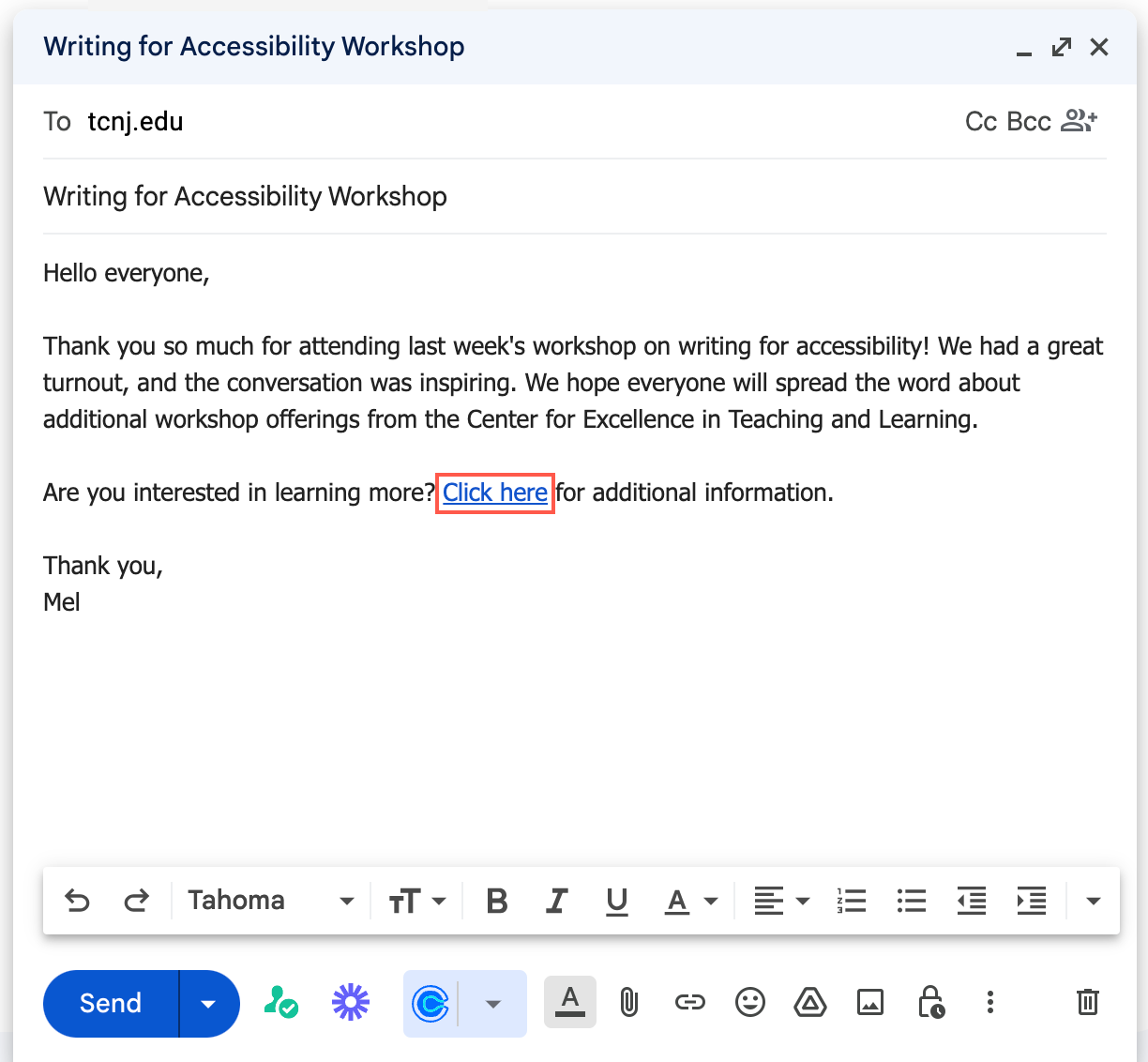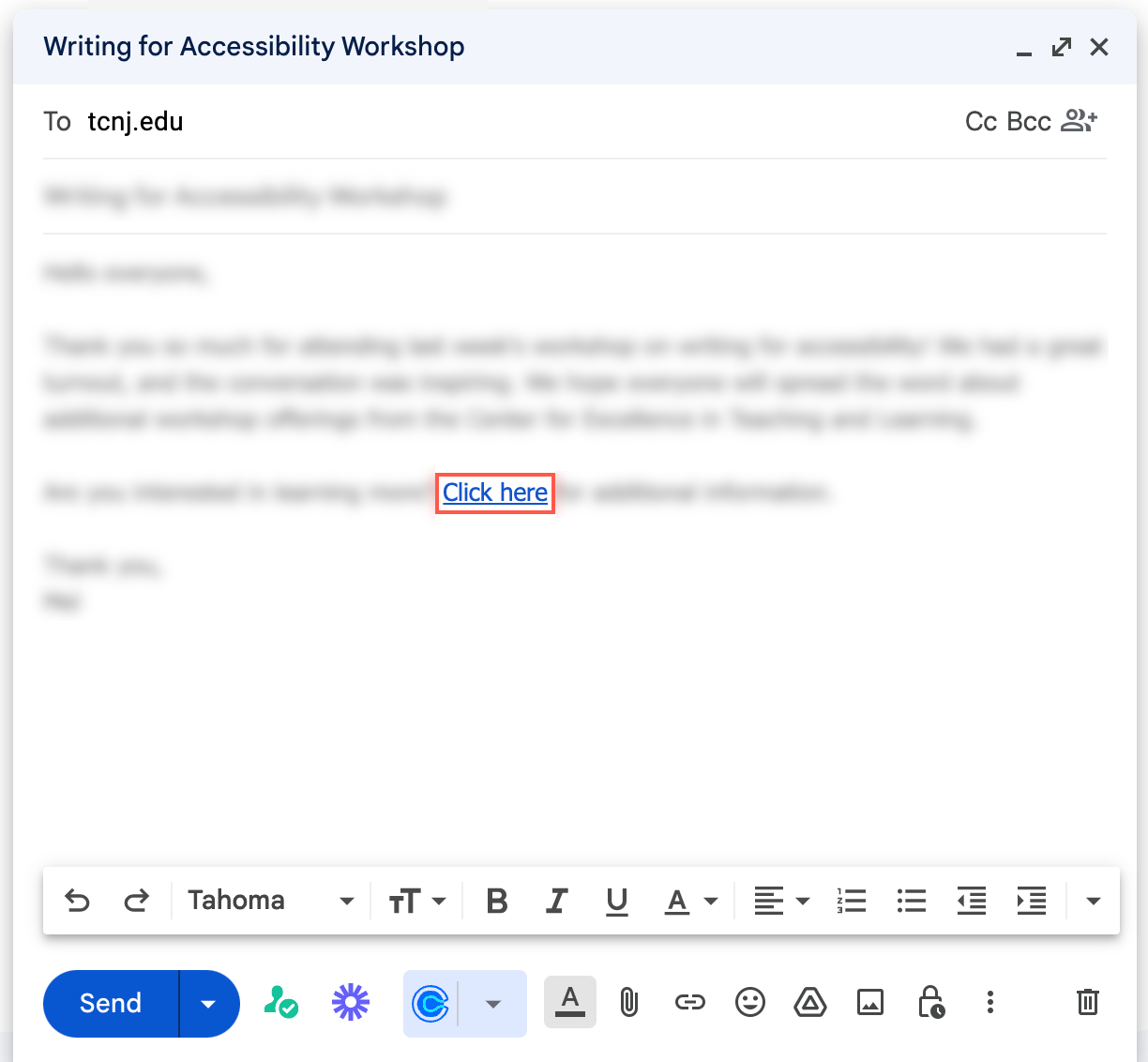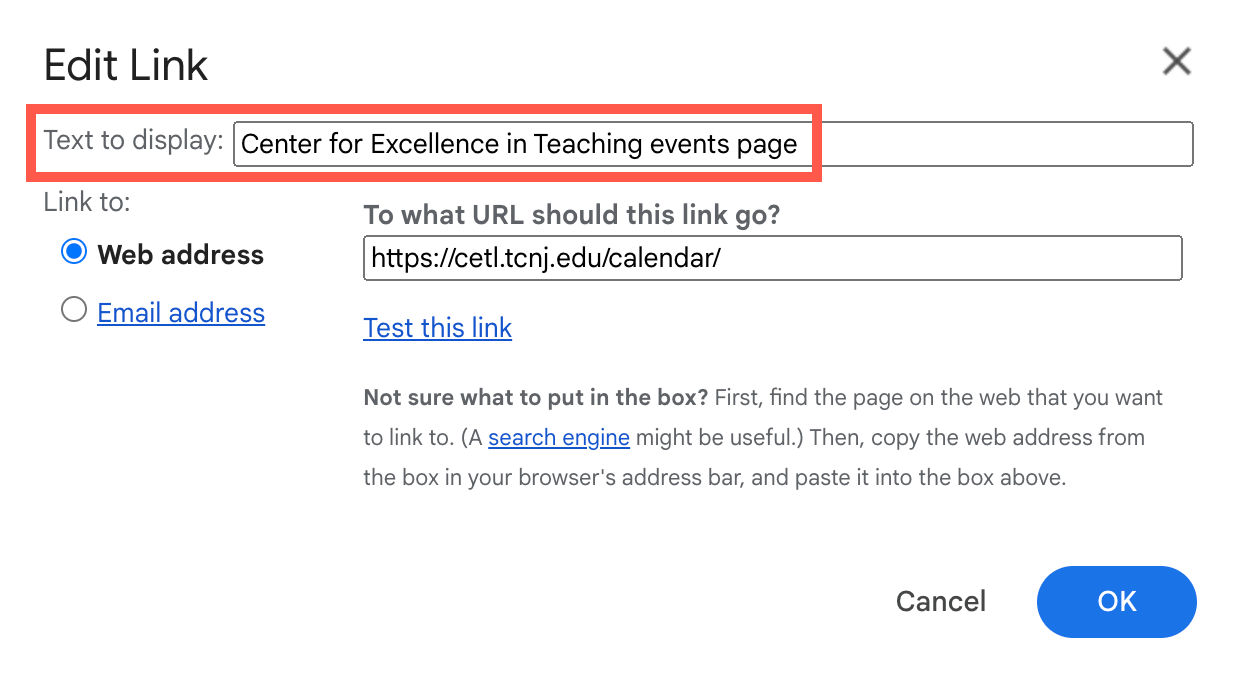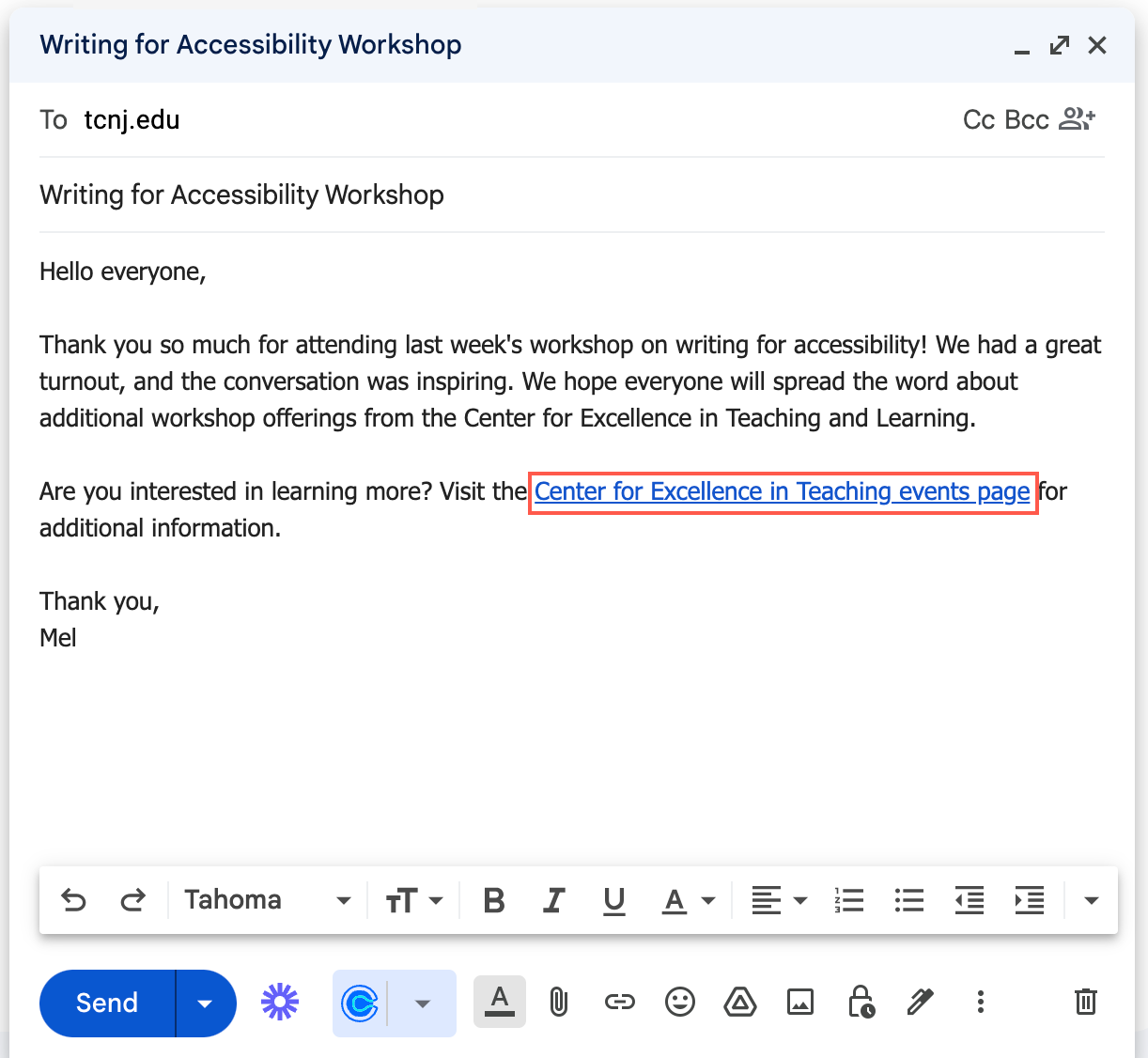Sharing hyperlinks in email is a common practice; for most people, it’s an everyday action. Sighted users visually identify links as underlined blue text. However, assistive technology users rely on software to announce a hyperlink’s presence. Screen readers allow users to tab through all links in an email. Descriptive text for hyperlinks is an accessibility best practice that is easy to implement.
Let’s consider the email below. A visual user can scan the rest of the email and assume the link relates to the Center for Excellence in Teaching and Learning. An assistive technology user navigating through links would only hear “Click here.” “Here” can be anywhere, making it nearly impossible to meaningfully use the link without listening to the surrounding content.
Consider the inclusivity that comes with writing accessible emails. If we blur all the information in the email aside from the link, can you identify what will happen when you select “Click here”? The lack of information speaks to the importance of writing descriptive link text. Not only does it benefit assistive technology users, but sighted users can also more easily identify a link’s purpose.
You can quickly address this issue by writing more descriptive link text. Descriptive link text is as it sounds: text that describes a link’s destination, function, or purpose. Writing descriptive link text from the start is best practice. However, you can edit an existing link to be more descriptive:
Right-click on the blue link.
Under “web address,” check that you’ve included the correct link.
In “text to display,” describe the link destination.
In this example, the link goes to CETL’s calendar-based event page.
Click “OK” and check that the draft email includes updated link text.
If necessary, add words before or after the link text to confirm the sentence makes sense.
The link text is now descriptive, making it accessible to sighted and assistive technology users. Best practice is to avoid any ambiguous or extraneous phrases, including “Click here,” “Read more,” or “Link,” among others. Pretending that the rest of the email is blurred out is a simple strategy for assessing descriptive link text.







